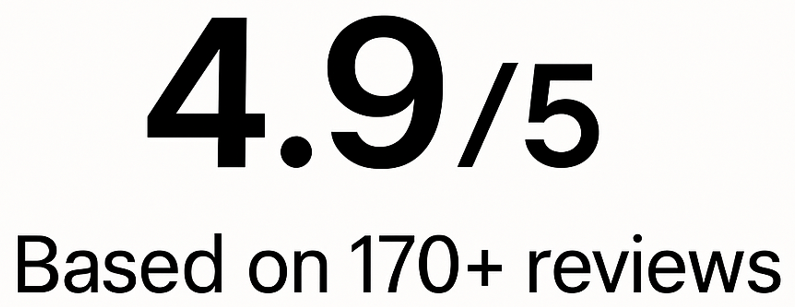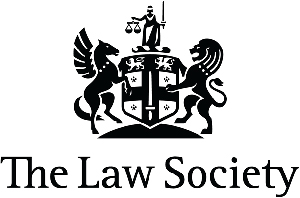Key Takeaways
- Tax avoidance examples in the UK range from legitimate tax planning to aggressive schemes that HMRC may challenge under anti-abuse rules.
- Lawful tax avoidance uses reliefs and allowances set out in tax law, while arrangements designed solely to avoid tax can breach the General Anti-Abuse Rule (GAAR).
- HMRC regularly investigates aggressive tax avoidance and can impose substantial penalties if a scheme is found to be abusive.
- Ignoring HMRC queries or statutory notices can result in unexpected financial penalties and may expose you to prosecution.
- Tax avoidance is distinct from tax evasion, but blurred boundaries can attract criminal investigation and reputational harm.
- Maintaining transparent records and adhering to UK tax requirements is essential for avoiding HMRC scrutiny.
- Responding to a HMRC tax avoidance claim requires specialist knowledge and swift action, often within 30 days of a notice.
- Securing early advice from specialist lawyers greatly enhances your chances of a positive outcome if HMRC challenges your tax position.
- Our firm is rated Excellent on Trustpilot with over 130 five-star reviews and a 4.9/5 client rating.
- Our experienced tax solicitors can review your arrangements, respond to HMRC, and help minimise your exposure to penalties.
What Are Real Tax Avoidance Examples in the UK—and How Does HMRC Decide What’s Legal?
Tax avoidance remains one of the most contentious areas for businesses and individuals in the UK. Not every strategy labelled as “tax avoidance” is illegal. Lawful tax planning—such as using pensions, ISAs, and allowances—forms part of a sensible financial strategy. However, certain aggressive tax schemes can cross the line, leading HMRC to launch investigations and apply the anti-avoidance regime.
Distinguishing between acceptable tax planning and those arrangements HMRC will challenge is key. Below, we analyse genuine tax avoidance examples UK clients frequently encounter, clarify the application of the General Anti-Abuse Rule (GAAR), and address the risks of tax avoidance schemes coming under HMRC scrutiny.
Our specialist solicitors work closely with individuals and businesses across England & Wales, providing clear strategies for defending HMRC challenges and minimising disruption. If you are concerned about your tax arrangements or need urgent legal representation to respond to an HMRC query, contact our expert team on 0207 459 4037 for a Free Consultation.
What Is Tax Avoidance in the UK—and How Does It Differ from Tax Evasion?
Tax avoidance involves arranging your financial affairs to reduce tax in a manner that complies with the letter—if not always the spirit—of the law. HMRC views tax avoidance as using legal means to achieve a tax result Parliament never intended through technicalities or loopholes.
Tax evasion, in contrast, means concealing income, falsifying records, or making deliberate misstatements to HMRC. Evasion is illegal and may result in prosecution, significant fines, and in some circumstances, imprisonment.
- Tax avoidance: Legal structuring that stretches the boundaries of tax law. HMRC may still challenge or defeat schemes it views as abusive.
- Tax evasion: Illegal acts or misrepresentation to deliberately underpay tax. Always a criminal matter.
Failure to spot the red lines between tax planning, avoidance, and evasion can lead to substantial and costly disputes. If your position is unclear, always seek advice from our expert tax solicitors before committing to any scheme.
You may also find our article on Tax Evasion vs Tax Avoidance UK – Key Legal Differences Explained helpful.
What Are Examples of Legal Tax Avoidance Schemes in the UK?
The UK tax system encourages certain types of tax planning through specific reliefs and allowances. Provided your affairs remain within statutory rules and HMRC guidance, these arrangements represent legal tax avoidance.
Which Tax Strategies Are Considered Lawful Planning?
- ISA contributions: Tax-free returns on savings and stocks are encouraged under the Individual Savings Account scheme.
- Pension contributions and salary sacrifice: Tax relief on approved pension plans lowers annual tax liabilities.
- Gift Aid donations: HMRC supports charitable donations through additional tax relief.
- Inheritance tax planning: Using the nil-rate band, lifetime gifting, and will structuring can reduce estate taxes for your heirs.
- Entrepreneurs’ Relief/Business Asset Disposal Relief: Reduced capital gains tax on sale of qualifying business assets.
- Personal allowances and standard reliefs: Fully utilising annual income tax, capital gains, and marriage allowances.
Planning which falls entirely within legislative purpose and documentation rarely faces challenge. Problems arise if arrangements move beyond these boundaries and are purely designed to deliver a tax advantage with no genuine commercial rationale.
If you are unsure whether your current tax approach is compliant, our tax dispute solicitors can review and provide risk-based advice.
To understand how to contest an adverse HMRC decision, you may also find our guide on How to Challenge a Tax Decision in the UK – Proven Steps for Disputing HMRC Rulings useful.
How Does HMRC Identify Aggressive Tax Avoidance Schemes?
HMRC targets “aggressive” avoidance schemes using multiple legal and investigative tools. Their focus is on arrangements that exist mainly to obtain advantages Parliament never intended. Two key mechanisms are the Disclosure of Tax Avoidance Schemes (DOTAS) regime and the General Anti-Abuse Rule (GAAR).
- DOTAS: Requires promoters and users of certain schemes to notify HMRC, with each registered scheme given a DOTAS number. This boosts HMRC’s oversight of new and aggressive planning.
- GAAR: Allows HMRC to challenge arrangements that, on objective standards, are abusive, even if technically aligned with the law.
What Makes a Scheme “Abusive” Under the Law?
HMRC—and the courts—scrutinise tax avoidance on factors including:
- Commercial motivation: Arrangements with no underpinning business purpose are likely to be challenged.
- Substance over form: Courts examine whether the practical results of an arrangement match its paperwork or artificially disguise intent.
- Intent of Parliament: Exploiting legal gaps that frustrate the intention of tax law is a classic sign of abusive avoidance.
Schemes using convoluted steps—like loans from offshore trusts, round-tripping transactions, or disguised remuneration structures—generally face the closest scrutiny.
If arrangements are structured more for a tax effect than any real commercial function, even compliance with black-letter law may not protect you from challenge.
How Does the General Anti-Abuse Rule (GAAR) Operate?
The GAAR, enacted by Part 5 of the Finance Act 2013, empowers HMRC to neutralise tax advantages resulting from abusive arrangements, irrespective of technical compliance:
- Purpose test: Evaluation of both main and sole purpose for entering into the arrangement.
- Double reasonableness test: Would any reasonable person, with full knowledge of the facts, regard what has been done as a reasonable course of action in relation to the relevant tax law?
- GAAR Advisory Panel: HMRC puts schemes to an independent panel whose published opinions guide enforcement.
If your arrangements share features with known abusive schemes, immediate legal advice is strongly advised.
What Are the Risks and Penalties if HMRC Challenges a Tax Avoidance Scheme?
If HMRC successfully disputes a tax arrangement as abusive, the implications can be severe, impacting your finances and reputation.
- Repayment of disputed tax (plus statutory interest)
- Penalties up to 100% of tax avoided (Finance Act 2007, Sch 24), calculated based on cooperation and whether conduct was deliberate
- Accelerated Payment Notices (APNs): Forcing taxpayers to pay the disputed sum within 90 days—even if appealing
- Follower notices: Requiring action consistent with concluded litigation on similar schemes
- Public naming: HMRC lists deliberate tax defaulters, which can affect business credit and reputation
Criminal prosecution remains rare, but is possible where arrangements cross into fraudulent or dishonest behaviour.
Inaction can compound liability, shorten your window for appeal, and expose you to cumulative financial risk.
How to Assess If Your Tax Planning Is Safe or at Risk of Challenge
With HMRC tightening oversight, prudent self-assessment of any schemes—existing or proposed—is vital to avoid the costs of investigation.
Checklist: Signs Your Scheme May Be Targeted by HMRC
- The arrangement is widely promoted, promising “guaranteed” or “risk-free” tax savings
- Money circulates offshore, then returns as a loan or other payment
- You are required to sign NDAs or provided with confidentiality clauses
- Scheme bears a DOTAS number or involves complex, opaque structures
- Absence of genuine commercial rationale apart from tax saving
If one or more of these “red flags” exists, the chance of HMRC action rises significantly, and a scheme review should be a priority.
What Documents and Evidence Support Your Defence?
Robust records and contemporaneous documentation make a material difference if your scheme is challenged:
- Complete correspondence with scheme promoters or advisers
- Written documents, contracts, and any structure diagrams
- Copies of professional legal or tax advice
- DOTAS reference or notification documentation (if applicable)
- Evidence of genuine business activity (transaction records, business minutes, emails)
If you are already involved in a high-risk arrangement, seek an immediate, confidential review from our specialist team.
Step-by-Step: How to Respond If HMRC Queries Your Tax Scheme
Engaging proactively and within deadlines is essential when faced with an HMRC avoidance enquiry.
What to Do When You Receive a Notice or Investigation Letter
- Read all documents carefully and diarise all deadlines—typically 30 days.
- Gather full records related to the scheme or arrangement, including advice, contracts, and correspondence.
- Appoint one of our solicitors with experience in HMRC investigations.
- Avoid delay—quick responses often reduce penalty exposure.
- Prepare a detailed, evidenced response—with legal analysis and supporting documents.
- Do not admit liability or pay assessed sums before reviewing your position.
Careful, strategic responses—drafted by expert solicitors—carry significantly more weight than generic or rushed replies.
Timelines and Key Deadlines: 30-Day Rules and Beyond
- 30 days is the default statutory deadline to respond to APNs, follower notices, and most information requests (Taxes Management Act 1970, s.34 and related regulations).
- Delays generally remove your right to appeal and will lead HMRC to proceed with penalties or assessments automatically.
- Some enquiries relating to self-assessment have wider review periods, but acting sooner always safeguards your legal position.
If you are unsure about a deadline or notice, ask one of our team to review all received documents at the earliest opportunity.
Building a Defence: How Legal Representation Can Help
Involving an experienced tax solicitor strengthens your case at every stage, providing:
- Careful review and explanation of all relevant documentation and advice
- Expert identification of genuine commercial need for the arrangement
- Strategic preparation of persuasive, evidence-based legal submissions
- Negotiation with HMRC, and escalation to the Tax Tribunal if necessary
Defending your position robustly and within deadlines puts you in the best position to avoid lasting damage.
What Laws and Deadlines Apply to Tax Avoidance in the UK?
Understanding the statutory landscape is fundamental to evaluating any tax planning, challenging an assessment, or responding to HMRC investigations.
Which Statutes Govern Tax Avoidance, Planning, and GAAR?
- Finance Act 2013, Part 5: Primary legislation introducing the General Anti-Abuse Rule (GAAR).
- Disclosure of Tax Avoidance Schemes (DOTAS): Places mandatory reporting obligations on certain tax planning arrangements.
- Finance Acts (2003, 2005, onwards): Define the scope of reliefs, anti-avoidance, and tax liability.
- Taxes Management Act 1970: Outlines administrative and enforcement procedures, as well as time limits for assessment and appeals.
Timely advice based on the correct legislation gives you the greatest control over costs and outcome.
Time Limits for Responding to HMRC and Avoiding Penalties
- 30 days: Typical deadline for APNs, follower notices, and information requests.
- 12 months: Standard window for HMRC to open an enquiry after a tax return is filed.
- 6 to 20 years: Maximum look-back period for HMRC to pursue underpaid tax—6 years for carelessness, 20 years for deliberate conduct or fraud.
If you have received a notice, contact our tax litigation team without delay to protect your appeal rights.
What Do the Courts Say About Tax Avoidance and HMRC Challenges?
Significant court decisions continue to refine the difference between lawful tax planning and abusive tax avoidance.
| Case | Facts | Outcome | Why It Matters |
|---|---|---|---|
| Rangers FC (Murray Group) [2017] UKSC 45 | Employees paid through offshore trusts | Ruled scheme was taxable employment income | Affirms GAAR applies if tax was the principal purpose |
| HMRC v H Ingenious LLP [2021] EWCA Civ 1180 | Film investment to reduce income tax | Relief denied; HMRC succeeded | Commercial substance required for relief claims |
| UBS AG v HMRC [2016] UKSC 13 | Employee bonus scheme using shares | PAYE applied to bonuses | Courts examine real intent behind structures |
| HMRC v Boyle [2014] UKUT 0337 | EIS relief in a true commercial venture | Relief permitted | Genuine enterprise and purpose protects legal planning |
The courts repeatedly stress that substance matters more than technical form. Only truly commercial, transparent arrangements will withstand HMRC and court scrutiny.
Our senior litigators advise on tax avoidance disputes approaching appeal or tribunal. Early expert involvement can be decisive in complex or high-value disputes involving recent case law.
Our Winning Approach to Tax Avoidance and HMRC Disputes
Our solicitors deliver clear, jargon-free advice to directors, individuals, and businesses facing HMRC challenge. We pride ourselves on:
- Fixed-fee reviews of tax arrangements and exposure assessment
- Secure digital document sharing for client peace of mind
- Direct contact to a named, senior solicitor from first enquiry
- Strategic communication with HMRC centred on early resolution
- No-win-no-fee support where appropriate in substantive disputes
- Guidance on reputational management where public listing or media issues arise
- Regular progress updates and transparent next steps
Our approach is focused on resolving disputes rapidly while safeguarding your legal, financial, and reputational interests.
Frequently Asked Questions
Is tax avoidance illegal in England & Wales?
No. Legal tax avoidance—using reliefs like ISAs, pensions, and personal allowances—is fully permitted. However, “aggressive” schemes that serve no genuine commercial purpose and exist solely to create tax savings will attract HMRC challenge and potential penalties.
How do I know if my tax arrangement is likely to be challenged?
Warning signs include offshore transfers, confidential or complex steps, lack of commercial justification, and being issued a DOTAS number. If you spot these factors, get a professional review of your arrangements as soon as practicable.
What is the difference between tax planning and tax avoidance?
Tax planning uses government reliefs and allowances for their intended purpose. Tax avoidance seeks to exploit loopholes or technicalities. If a scheme lacks genuine business substance, HMRC can seek to defeat it as abusive.
Can HMRC investigate past years of my tax affairs for avoidance?
Yes. HMRC can review up to 20 years back if deliberate avoidance or fraud is alleged, 6 years for carelessness, and 4 years for innocent errors.
What evidence do I need if HMRC sends me a follower or APN notice?
Collate all scheme correspondence, written advice, DOTAS information, contracts, and proof of business rationale to provide the strongest response.
Is it worth negotiating directly with HMRC or should I use a solicitor?
For simple or minor issues, direct engagement may sometimes suffice. For complex, high-value, or contentious schemes, one of our expert tax solicitors can help you protect your position, identify strong legal grounds, and avoid strategic errors.
What are common red flags HMRC looks for in financial arrangements?
Red flags include circular or offshore movement of funds, artificial steps with no business reason, use of DOTAS schemes, promoter secrecy, and schemes promising to “eliminate” tax liability.
Will challenging a tax bill affect my reputation or business credit?
Potentially yes, particularly if listed as a deliberate defaulter or if the dispute enters the public domain. Directors and professionals should be aware challenges can have wider commercial impact.
Can I appeal if HMRC refuses to withdraw a penalty for tax avoidance?
Yes. You may request an internal HMRC review and, if needed, appeal to the independent First-tier Tax Tribunal. Strict 30-day time limits apply for both.
How long do I have to act after receiving an HMRC tax avoidance notice?
You typically have 30 days to respond. Immediate action is essential—delays can permanently forfeit appeal rights and result in automatic penalties.
Get Strategic Tax Avoidance Advice From Solicitors Today
Clarity around tax avoidance, planning, and evasion is crucial for individuals and businesses wishing to operate within the law and avoid costly dispute with HMRC. Using government-approved reliefs like ISAs and pensions is entirely legitimate, but artificial or aggressive schemes will likely attract challenge, penalties, and in rare cases, prosecution.
Our tax litigation team supports clients across England & Wales facing HMRC investigation, contesting penalties, or reviewing arrangements for compliance. For urgent advice on your tax position, or a confidential scheme review, call us on 0207 459 4037 or book a Free Consultation using our online contact form.

































